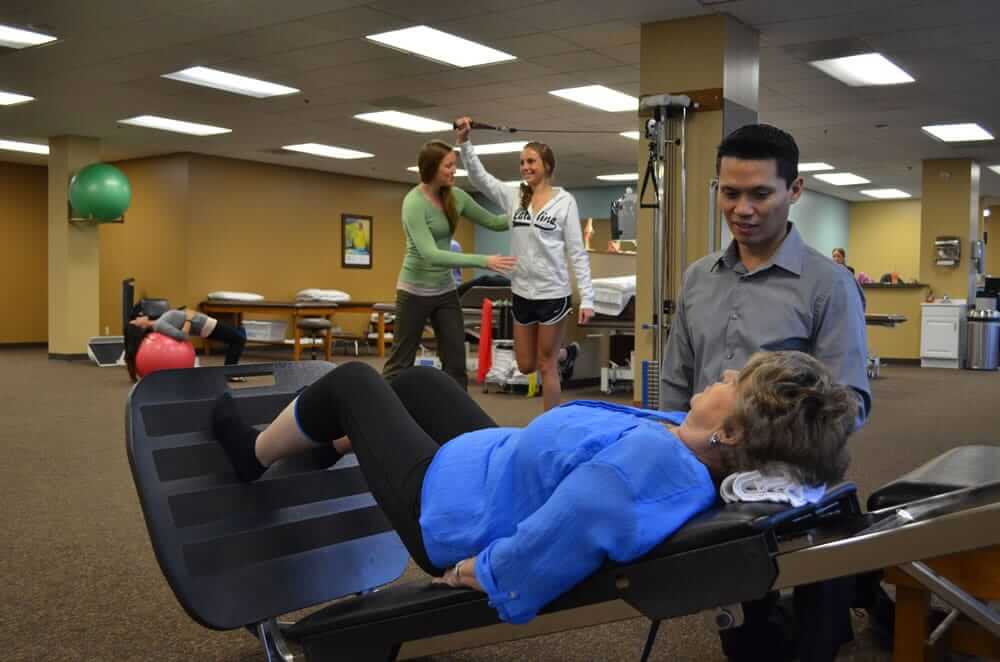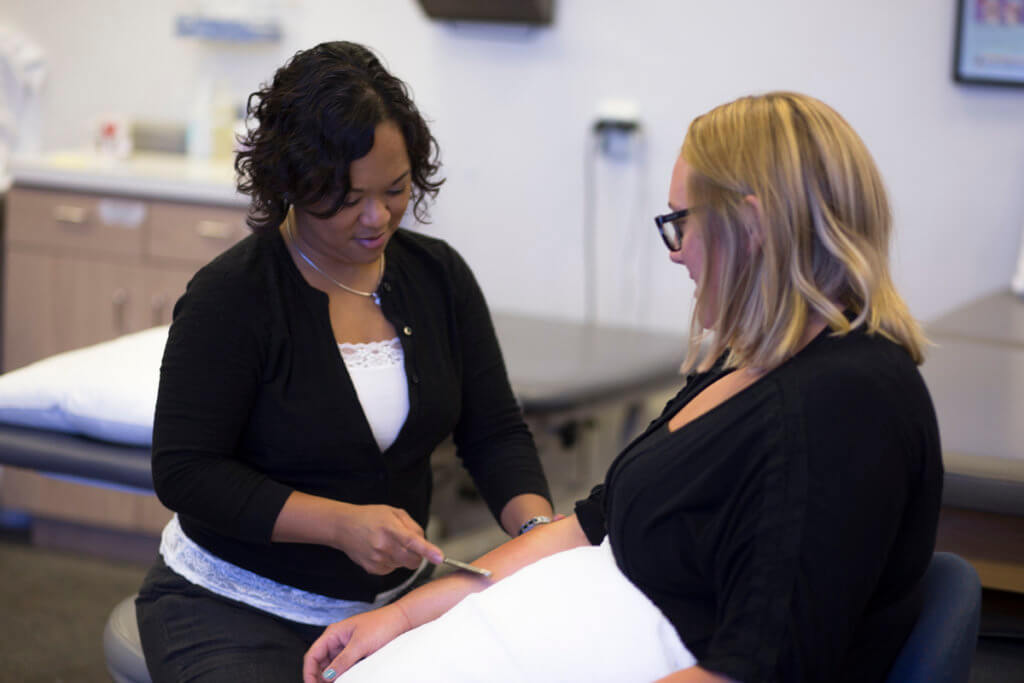Fibromyalgia is a condition that, for many people, is associated with more questions than answers. However, physical therapists, as experts in musculoskeletal problems, are an important resource for people who have fibromyalgia.
Let’s start with what fibromyalgia is: Due to its varied symptoms, fibromyalgia can be difficult to diagnose. People with fibromyalgia usually have widespread pain throughout the body, often accompanied by tender points, muscles and joints that are particularly susceptible to pain and movement. According to the Mayo Clinic, “Researchers believe that fibromyalgia amplifies painful sensations by affecting the way your brain processes pain signals.”

Other symptoms can include insomnia, fatigue, muscular stiffness (especially in the morning), headaches, forgetfulness and cognitive difficulty (sometimes referred to as “fibro fog”), and tingling in the extremities (the hands and feet). The symptoms sometimes begin after a traumatic event, like a car accident or an invasive surgery, or they can develop over time. It’s most often diagnosed in women, but 10-20% of those suffering from fibromyalgia are men. You may also be at risk if family members have been diagnosed with fibromyalgia, or if you have a rheumatic condition like rheumatoid arthritis or lupus.
Because of the variety of symptoms and intensity from patient to patient, no two treatment plans are the same. Possible interventions include medication, therapy, dietary changes or supplements, physical therapy and exercise. If you have been diagnosed with fibromyalgia, be sure to speak with your doctor about what the best treatment plan will be for you.
Several recent studies have shown that exercise can lessen the severity of fibromyalgia symptoms, the most recent being published in the academic journal Arthritis Care & Research in July 2013. Unfortunately, many people that suffer from fibromyalgia are often afraid to start an exercise program or to continue working out, for fear that it will worsen their pain.

The American Physical Therapy Association agrees that “regular, moderate exercise is an important part of managing fibromyalgia.” Your physical therapist can work with you to create an exercise program tailored to your specific needs and skills. A physical therapist can also teach you how to pace yourself and set realistic goals for exercise and physical activity, as well as how to modify your program whenever your symptoms flare up.
In addition, physical therapists may have other tools and approaches to help relieve pain. PTs use a variety of manual therapies with their fibromyalgia patients, including myofascial release, trigger point therapy and massage. As part of their thorough intake evaluation, PTs can determine whether other approaches may help to relieve pain, like activity modification, posture improvement and positional sleep strategies.
As part of their extensive training, all physical therapists are prepared to treat patients with fibromyalgia, but the APTA recommends these tips to find one that’s right for you:
- You may want to consider a physical therapist who is experienced in treating people with orthopedic, or musculoskeletal, problems. Some PTs earn additional certifications in Orthopaedic Physical Therapy. These therapists have advanced knowledge, experience and skills that may apply to your condition.

- When you contact the physical therapy clinic for an appointment, ask about the physical therapist’s experience in helping people with fibromyalgia.
- During your first visit with the physical therapist, be prepared to describe your symptoms in as much detail as possible, and tell him or her what makes your symptoms worse.
Want to find a physical therapist to help with your fibromyalgia symptoms? See if there is a Physiquality physical therapist near you by using the clinic locator below.
Mayo Clinic. Fibromyalgia. February 20, 2014.
Kaleth, Anthony, Chandan K. Saha, Mark P. Jensen, James E. Slaven and Dennis C. Ang. Effect of moderate to vigorous physical activity on long-term clinical outcomes and pain severity in fibromyalgia. Arthritis Care & Research, July 2013.
Fibromyalgia. The National Institutes of Health, July 2011.
Bisaccia, Andrew. Fibromyalgia and physical therapy. Hayashida Physical Therapy, July 31, 2011.
Physical therapist’s guide to fibromyalgia. American Physical Therapy Association, June 7, 2011.
Roan, Shari. Fibromyalgia and exercise: More tips from an expert. Los Angeles Times, May 24, 2011.
Fibromyalgia: Creating a treatment plan. WebMD, August 23, 2010.
Patient voices: Fibromyalgia. New York Times, March 2010.